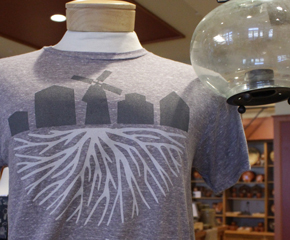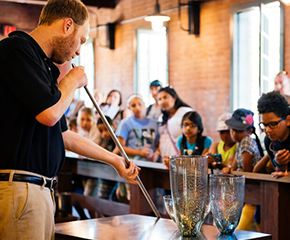Two-Horse Treadmill-Type Horse Power, circa 1900
Add to SetSummary
Farmers began to use stationary power sources in the nineteenth century as they mechanized barn or farmyard work like threshing, winnowing, or corn grinding. Some invested in animal treadmills like this one. Animals walked on an "endless belt," a device similar to those on modern exercise treadmills. A wheel and belt converted the animals' movement to drive a variety of agricultural machinery.
Farmers began to use stationary power sources in the nineteenth century as they mechanized barn or farmyard work like threshing, winnowing, or corn grinding. Some invested in animal treadmills like this one. Animals walked on an "endless belt," a device similar to those on modern exercise treadmills. A wheel and belt converted the animals' movement to drive a variety of agricultural machinery.
Artifact
Treadmill
Date Made
circa 1900

On Exhibit
at Greenfield Village in Soybean Lab Agricultural Gallery
Object ID
31.482.1
Credit
From the Collections of The Henry Ford.
Material
Wood (Plant Material)
Dimensions
Width: 72 in
Length: 120 in
Inscriptions
Stenciled on the side: NO. 7229 / THE SUPERIOR / HEEBNER'S / PATENT / LEVEL TREAD POWER / MANUFACTURED BY / HEEBNER & SONS / LANDALE, PA. U.S.A. / 1900





